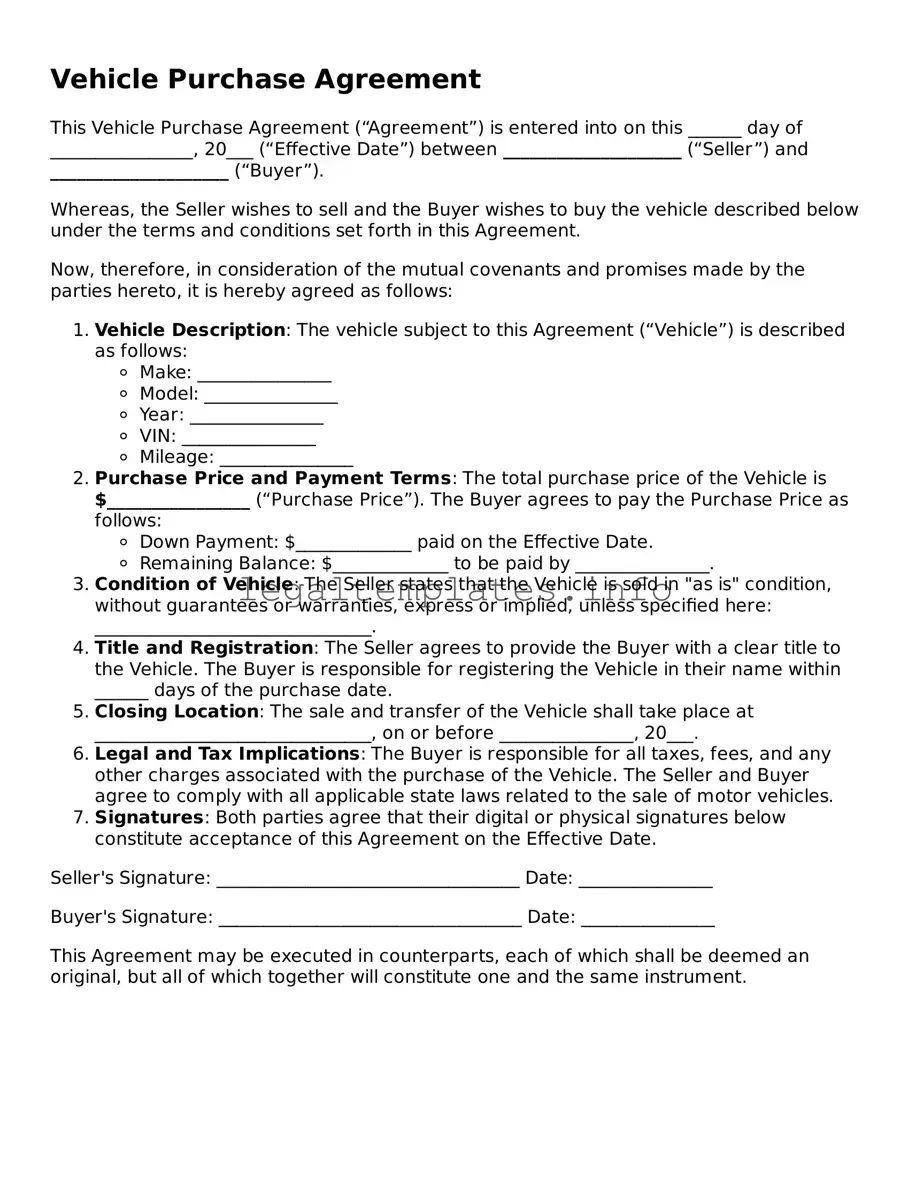What is a Vehicle Purchase Agreement form?
A Vehicle Purchase Agreement form is a crucial document in the process of buying or selling a vehicle. It records all the important details of the transaction, including information about the buyer and seller, a description of the vehicle, the sale price, and any warranties or agreements. This legally binding contract ensures both parties understand their rights and obligations, providing protection and clarity.
Why is it necessary to have a Vehicle Purchase Agreement form?
Having a Vehicle Purchase Agreement is necessary for multiple reasons. It acts as proof of the sale and purchase, documents the condition and terms of sale of the vehicle, and helps to prevent misunderstandings between the buyer and seller. Additionally, it can be required for the registration of the vehicle and might be needed for tax purposes. This agreement ensures a smooth transfer of ownership, minimizing potential legal disputes.
What information should be included in a Vehicle Purchase Agreement form?
A comprehensive Vehicle Purchase Agreement form should include the names and contact information of both the buyer and seller, the vehicle's make, model, year, VIN (Vehicle Identification Number), and mileage. The sale price, payment details (including deposit and financing arrangements, if any), and sale date should be clearly stated. It should also detail any warranties or "as-is" sale conditions, and any additional terms agreed upon, such as including car accessories or services.
How legally binding is a Vehicle Purchase Agreement form?
Once signed by both the buyer and seller, the Vehicle Purchase Agreement form becomes a legally binding contract. This means both parties are obligated to fulfill their respective parts of the agreement. If either party fails to comply with the terms, they could face legal repercussions. The agreement serves as a legal document that can be used in court to enforce the contract or settle disputes.
Can I modify a Vehicle Purchase Agreement form after it has been signed?
Modifying a Vehicle Purchase Agreement form after it has been signed is possible but requires the consent of both the buyer and seller. Any changes should be made in writing, and both parties should initial and date any amendments to the original agreement. It's essential to communicate openly about any desired changes and come to a mutual understanding to avoid misunderstandings or legal issues down the line.
